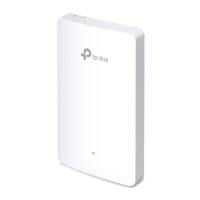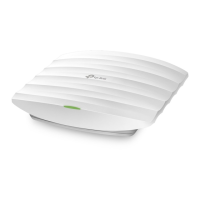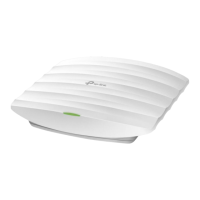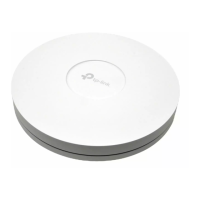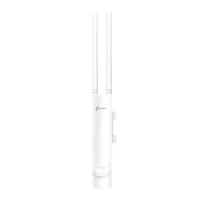58
2. Check the box to enable Wi-Fi Multimedia (WMM). With WMM enabled, the EAP uses
the QoS function to guarantee the high priority of the transmission of audio and video
packets.
Note:
If 802.11n only mode is selected in 2.4GHz (or 802.11n only, 802.11ac only, or 802.11 n/ac mixed
mode selected in 5GHz), the WMM should be enabled. If WMM is disabled, the 802.11n only mode
cannot be selected in 2.4GHz (or 802.11n only, 802.11ac only, or 802.11 n/ac mixed mode in 5GHz).
3. In the AP EDCA Parameters section, configure the AP EDCA ((Enhanced Distributed
Channel Access) parameters. AP EDCA parameters affect traffic flowing from the EAP
to the client station. The following table detailedly explains these parameters.
The following table detailedly explains these parameters:
Queue Displays the transmission queue. By default, the priority from high to
low is Data 0, Data 1, Data 2, and Data 3. The priority may be changed if
you reset the EDCA parameters.
Data 0 (Voice): Highest priority queue, minimum delay. Timesensitive
data such as VoIP and streaming media are automatically sent to this
queue.
Data 1 (Video): High priority queue, minimum delay. Time-sensitive
video data is automatically sent to this queue.
Data 2 (Best Effort): Medium priority queue, medium throughput and
delay. Most traditional IP data is sent to this queue.
Data 3 (Background): Lowest priority queue, high throughput. Bulk data
that requires maximum throughput and is not time-sensitive is sent to
this queue (FTP data, for example).
Arbitration Inter-
Frame Space
A wait time for data frames. The wait time is measured in slots. Valid
values are from 0 to 15.
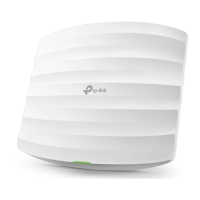
